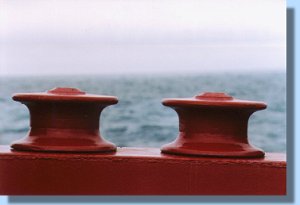
We're out in the open ocean again. From the Falkland Islands it's about 1300 km towards South Georgia, a onetime whaling base, and home to a million seabirds and marine mammals. Travelling on the Scotia Sea at 14 knots we'll reach South Georgia in about two days.
During ocean crossings the days are filled with lectures. These lectures are held by members of the staff and deal with a variety of topics, ranging from biology to geology and history.
The first lecture on the schedule is a talk by Art Ford about the origin of Antarctica. In his talk Art explains how about 200 million years ago Pangaea split up in a northern (Laurasia) and southern part (Gondwana). Some 80 million years later Gondwana separated into Africa and South America thus forming the Atlantic Ocean and another 80 million years later Antarctica started shifting south from South America. The appearance of a circumpolar current, blocking warmer currents from the equator marked the onset of Antarctica's cooling until it's present status as "the frozen continent".
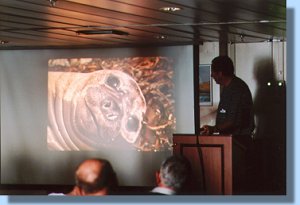
Following is a talk by Doug Cheeseman about the flora and fauna that we will encounter during our visit to South Georgia. Doug tells us about the behavior of the various animals and their habitat illustrated by a number of beautiful pictures.
Tim Davis, one of the professional photographers aboard, follows with a number of tips on the art of photographing landscapes. Beautiful pictures of sea elephants, fur seals, king penguins and many more.
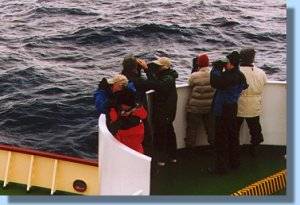
After lunch we decide to skip Neil Marsden's talk about his years with the British Antarctic Survey. Although this lecture, no doubt, will be very interesting as well we've already spend half a day inside today. We wouldn't like to miss the nice and clear weather outside either. Many seabirds can be seen flying around the ship, or better they're gliding with their wings almost motionless in the wind.
At the end of the afternoon we attend a lecture by Buff Corsi about video editing techniques. She offers us some good tips on framing, wide angle shots, mirroring and a number of other techniques to produce a nice memory of a trip like this one.
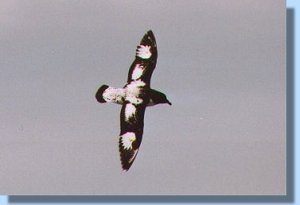
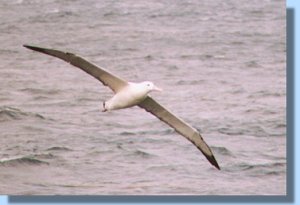 The last lecture today is delivered by Julie Hagelin and deals with the
different techniques used by birds to fly. She tells us that birds with short wings
will need flapping to stay airborne while birds with long wings, like albatrosses
can glide on the winds for hours at a stretch.
The last lecture today is delivered by Julie Hagelin and deals with the
different techniques used by birds to fly. She tells us that birds with short wings
will need flapping to stay airborne while birds with long wings, like albatrosses
can glide on the winds for hours at a stretch.
Edward Rooks' drawing class deserves some better participants than we are so we skip that but we definitely don't want to miss the after dinner video. It's a great black and white movie about a ship sailing around Cape Horn in 1929 in a raging storm with 100-foot waves. With great sense of humor the person who shot the film 50 years earlier commented upon some of the scenes. Let's hope that our Drake passage will be a bit smoother.